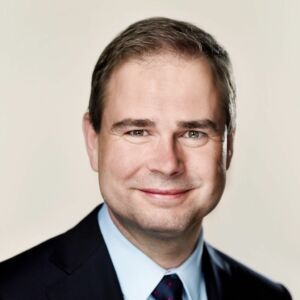News
As speculation mounts about the PM heading to NATO, party soldiers ponder the future
This article is more than 2 years old.
ANALYSIS: Long-time Dutch PM Mark Rutte is also a strong candidate, but should Mette Frederiksen head NATO, who will become Danish PM? Nicolai Wammen (finance) or Peter Hummelgaard (justice) is her most likely replacement

Minister of Finance, Nicolai Wammen (Photo: Folketinget)
Could a Dane again be the head of NATO?
The question occupies a lot of space in the Danish media and in Christiansborg these days. Prime Minister Mette Frederiksen is constantly asked whether she will replace Norwegian head Jens Stoltenberg, who has announced his resignation.
The position as head of NATO is expected to be filled at a joint NATO meeting in July. Mette Frederiksen insists she is not a candidate for the job.
As reigning PM, Anders Fogh Rasmussen said the same thing in 2009. Hence, the Danes do not take it too seriously that their prime minister has rejected the NATO candidacy.
It is understood that as a sitting prime minister you cannot say anything else. You are PM until you are either overthrown or resign from office, as Anders Fogh did and Jens Otto Krag did in 1972.
Another Scandinavian or Rutte?
Frederiksen may become the first woman to head NATO. She is recognised as a strong leader, standing tall against Russia’s attack on Ukraine and leading the way towards a stronger Danish military in the coming years.
However, will NATO choose a Scandinavian for the third time in a row? Stoltenberg replaced Rasmussen, after all, and long-time Dutch PM Mark Rutte is also mentioned as a strong candidate.
Both Rutte and Frederiksen are sitting government leaders, so clearly not candidates for any other job. They have to say that. On Wednesday, Mette Frederiksen repeated her line when she had to comment on the upcoming visit to the White House on June 5 to meet President Joe Biden.
If, despite strong denials, she nets the top international job, it will trigger an unpredictable situation in Danish politics.
While the government will probably stay in place, the expectation is that the respected finance minister, Nicolai Wammen, would will replace Frederiksen.
Wammen is widely liked in Christiansborg, and Venstre and Moderaterne are unlikely to oppose him replacing Frederiksen as PM.
The cashier or the ideologue
Wammen is not a public darling. Finance ministers rarely are. He has proven to be a reliable cashier sitting on top of booming finances courtesy of several broad agreements to secure the Finance Act and sturdy aid packages during the corona crisis.
Internally in Socialdemokratiet, several people point to the more ideological Peter Hummelgaard as a stronger leader. In the previous government, he was the minister for employment. Now he is the minister for justice.
He belongs to a generation of social democrats who advocate stronger state regulation and confronting financial inequality. Hummelgaard is not shy of strong attacks on the media. Most recently, he scolded BT for writing critically about his illegal parking in front of his child’s kindergarten.
Right now, Wammen is the obvious successor – not least because of his good relationships across Parliament. But as time goes on, Hummelgaard will emerge stronger as a replacement for Frederiksen, who has been unchallenged as leader since she took over from Helle Thorning-Schmidt in 2015.
Frederiksen has dominated Danish politics for several years. The construction of the current majority government is her job. If she leaves it unfinished – and unfinished it is – it will create political earthquakes. Perhaps most of all in her own party.










































